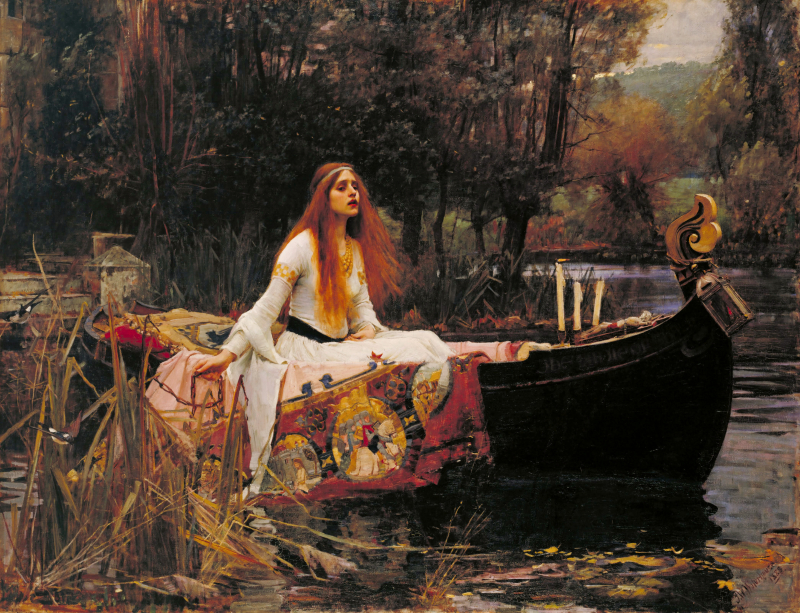The Lady Of Shalott
The Lady of Shalott is an 1888 artwork by English painter John William Waterhouse. It depicts the conclusion of Alfred, Lord Tennyson's 1832 poem of the same name. Waterhouse depicted this character three times, in 1888, 1894, and 1915. It is one of his most famous works, in which he inherited much of the Pre-Raphaelite Brotherhood's style, despite the fact that Waterhouse was painting several decades after the Brotherhood split up during his adolescence. Sir Henry Tate presented the Lady of Shalott to the public in 1894, and it is currently on exhibit in Tate Britain, London, in room 1840.
One of John William Waterhouse's most famous works is The Lady of Shalott, an 1888 oil-on-canvas painting. It depicts a scene from Tennyson's poem in which the poet describes the plight and predicament of a young woman, loosely based on the figure of Elaine of Astolat from medieval Arthurian legend, who yearned with unrequited love for the knight Sir Lancelot, who was isolated under an unknown curse in a tower near King Arthur's Camelot. Waterhouse depicted this character three times, in 1888, 1894, and 1915.
The painting features the Pre-Raphaelites' trademark finely painted detail and bright colors. It depicts the title character from Tennyson's poem, often known as The Lady of Shalott. The Lady was imprisoned in her chambers in the poem, under a curse that barred her from going outside or even looking directly out a window; her sole view of the world was through a mirror. She sat beneath the mirror, weaving a tapestry of scenes she could see in her reflection. The Lady has made her way to a small boat after violating the curse by staring out the window at Camelot. This is the scene depicted in Waterhouse's painting, as the Lady departs to meet her fate. She is shown sitting on the tapestry she woven.
The Lady's boat is outfitted with a lantern on the bow and a crucifix towards the stern. Three candles are placed next to the crucifix. Candles were a symbol of life - two of the candles have already burned out, indicating that her death is imminent. Aside from the metaphorical intricacies, this artwork is prized for Waterhouse's realistic painting skills. The Lady's attire contrasts sharply with the much darker tones of the background. Waterhouse's attention to detail and color, the emphasis on nature's beauty, the lifelike aspect, and his interpretation of her delicate, wistful expression are all examples of his artistic skill. Naturalistic features include a pied flycatcher and water plants that would have been found in an English river at the time. Sir Henry Tate donated the Lady of Shalott to the public in 1894.
Author: John William Waterhouse











